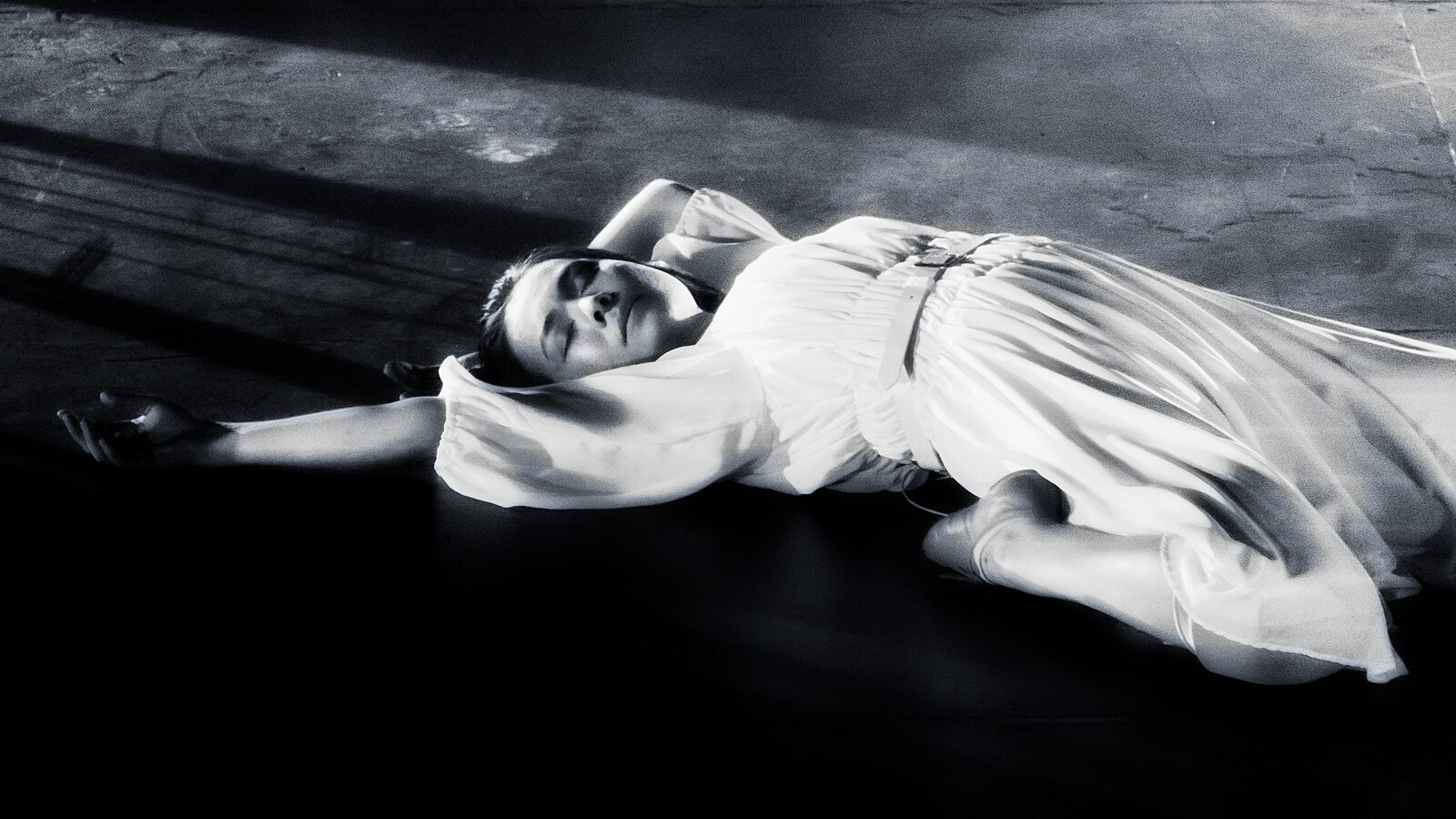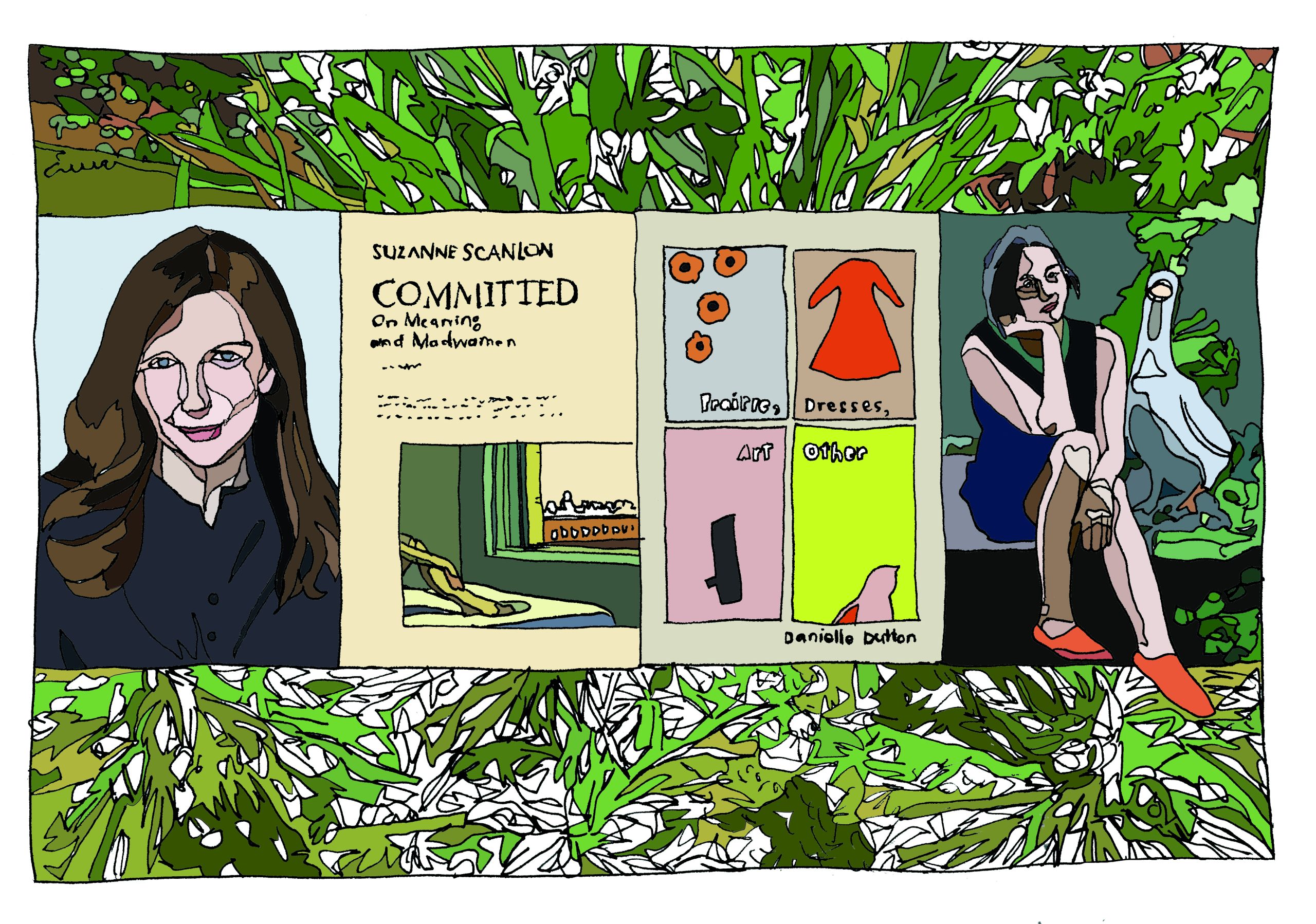essays
“Then, a Hellbeast Ate Them”: Notes on Horror Fiction and Expectations

Halfway through Diane Cook’s magnificently unsettling collection Man V. Nature comes a story called “It’s Coming.” As accuracy in titles goes, this one’s spot-on: the story, told in the first person plural, follows a group of people whose work day is interrupted by an alarm, announcing the impending arrival of something awful. “I always thought it would come at night, while we slept,” one of them says, and the bulk of the story follows the group as they attempt to escape from this entity, glimpsed largely in passing, described via glimpses and rumors. There’s certainly a satirical element to Cook’s story, deconstructing a certain kind of corporate office culture even as the danger posed by the creature increases. But as the title suggests, what we have here is a horror story featuring a monster, a chase, and a reckoning.
Though Cook’s collection is stylistically broad, several of its other stories also delve into the realm of the horrific. The protagonist of “Somebody’s Baby” must contend with a preternaturally skilled thief who makes off with numerous children in her neighborhood, and has for years, if not longer. And the title story finds three childhood friends adrift in a raft on a lake, unable to find land. While their relationships and history are rooted in a kind of kitchen-sink realism, the strangeness of their setting suggests something else entirely–Raymond Carver characters trapped in what might well be Limbo or Hell.
While I wouldn’t call Man V. Nature a horror collection, I also wouldn’t be shocked to see readers who enjoy horror embracing it: like the best horror fiction, Cook is able to tap into various eternal anxieties and create disquieting fiction out of them. Two other stories in the book are set in versions of our own society, where questions of growing up and having relationships are altered just a touch to create nerve-wracking scenarios. Cook’s fiction could be accurately described as literary, but she’s an author of literary fiction willing to embrace horror. The monster in “It’s Coming” isn’t a metaphor, after all–though some of the characters in the story would like to hope that it might become one.
We’re now well into a period where literary writers are able to balance their love for horror (or science fiction, or fantasy) with their craft, and fewer and fewer bat an eye. (This is, I believe, as it should be.) But now that we’ve gotten past that, there’s another question raised by fiction that falls into the realm of, for lack of a more graceful term, literary horror: how does it deal with our expectations of both of its literary forebears? Regardless of the style, a writer’s ability to create memorable characters is essential. But there’s also a subtle difference between creating memorable characters whose fates can feel tragic, triumphant, or righteous, and creating memorable characters where the point may well be to see how they process a world that’s turned irrational.
Consider Bennett Sims’s A Questionable Shape and Colson Whitehead’s Zone One, both novels set after an outbreak of zombies. Given the literary histories of both writers, comparisons between the two were inevitable. (Including one I wrote.) But part of the tension that came from reading these books, in which semi-detached protagonists walked through a changed and hazardous world, was the overarching questions of what kind of book they’d turn out to be. Would these be zombies-as-meditation, or would they opt for a ratcheting up of their horrific elements at the end? Both Sims and Whitehead are thoughtful writers, and they’ve clearly thought out the fictional worlds they’ve created: these aren’t just generic zombie apocalypses or George A. Romero pastiches. That’s a good thing–but it raises the stakes even more. Sims takes a postmodern route with his book, while Whitehead’s novel shared the same meditative qualities with respect to cities that he brought to books like The Intuitionist and The Colossus of New York. And in the end, both Sims and Whitehead pull it off: they’re able to keep that thematic resonance going even as they increase the tension. And that’s one approach.
Other writers have found ways to both make expected scenarios seem fresh and surreptitiously revisit genre conventions. As befits a story that opens with its main characters playing a game called Dead, Kelly Link’s story “The Specialist’s Hat” does not have a happy ending. There are mysterious figures in the woods, and the legacy of a writer of weird fiction, and sinister artifacts–all impressively atmospheric, almost Gothic elements–but they come together unexpectedly, mysteriously. Writing about Link’s collection Stranger Things Happen, in which this story appears, Laura Miller noted that “[m]any of the stories here use enigma to expertly conjure up an atmosphere of dread or menace in a way that’s reminiscent of David Lynch at his best.” (She cites “The Specialist’s Hat” in particular as an example of this.) And it’s that ambiguity that makes this story even more horrifying: the fear of the unknown and the fear of the menacing aspects of the story blend into something that’s more unsettling than either might be on their own.
The title story of Brian Evenson’s collection Windeye takes its time revealing its true shape. Like Link’s story, children’s games play a part. The main character is looking back at his childhood, and remembering time spent with his sister, observing the house in which they lived. Slowly, it comes to him that there’s something wrong with the house:
For a while, he’d play to her level, narrate to her what the surface she was touching or the shadow she was glimpsing might mean, so she could pretend. But over time he drifted out again. There was something about the house, the house as a whole, which troubled him. But why? Wasn’t it just like any house?
Of course, the answer to that last question is “No.” But calling “Windeye” the story of a haunted house wouldn’t be entirely accurate, but it’s the most accurate category of those that are there. Like Mark Z. Danielewski’s House of Leaves, it’s a story in which the space itself seems to be doing the haunting. And there are also certain familiar-seeming elements: notably, the main character remembering his grandmother warning him with stories from the old country about the uncanny, telling him about things that appear to be windows, but are not. And while awful things happen, the way the story resolves itself is both appropriately horrific and raises questions of memory and sanity: this could be a story about a tragic encounter with the uncanny early in life, or it could be one remembered by a wholly unreliable source.
Other writers enjoy working with and subverting with the genre’s expectations. Nick Antosca has a comprehensive appreciation for the permutations of the horror genre, and can do fantastic things within the confines of familiar subgenres. His novel Midnight Picnic, for instance, is one of the best ghost stories I’ve read in years, taking the concept of the vengeful revenant and plunging it into places you might not expect it to go. His most recent story collection, The Girlfriend Game, contains accounts of horror both emotional and literal; in the latter category, one of the most memorable sections comes via a story titled “Soon You Will Be Gone And Possibly Eaten.” The title, by the way, is not a metaphor. There are aliens; they abduct people. Not only that: they abduct particularly beautiful people. Sometimes the abductions last for a night, and sometimes they’re permanent. Sometimes those abducted are returned, and sometimes those who are abducted are returned partially devoured.
Faces gone, scooped out along with their brains as if by a giant spoon, only the backs of their skulls remaining. One imagined creatures with huge, convex mouths, like deep sea fish, the teeth protrusive and razory.
So: lethal aliens pursuing young, beautiful people. There’s clearly an awareness of tropes and expectations here, and there’s a tangible sense of menace: the narrator’s girlfriend Sabile is one of the people chosen by the aliens. But where Antosca goes with this story is unexpected: though there’s the obvious sense of jeopardy, the sense of menace is conveyed as much through the tension in the story’s central relationship as through the aliens lurking off in the margins, passing through walls and devouring heads. The central tension becomes as much about the narrator’s state of mind, and his relationship to the aliens: it’s a kind of love triangle where one side is fundamentally unknowable. The narrator’s musings, though, put the spotlight on him, and on the unsettling forms his jealousy takes–a kind of flipside of the aliens’ lethal incursions.
Helen Oyeyemi, too, plays with expectations in her novel White Is For Witching, which plays with the expectations of a haunted house narrative even as muses on questions of race and community. Here, there’s a give and take: a sense of menace without the genre’s relief of a solid and concrete solution. There are hauntings and disappearances and mysteries to be solved, but there’s no moment when the family at the novel’s heart can feel like the storm has passed. And that, in its own way, makes for a more unsettling experience than anything: the real-world concerns that inform Oyeyemi’s narrative. That juxtaposition of the real and the supernatural can shake out in unexpected ways. In a 2012 interview with Bookslut, Victor LaValle noted that, in his novel The Devil in Silver, “on one level the “weird” elements make it possible for someone to sit through conversations and information about stuff like budget cuts, hourly pay rates, and the damage done to our health care system by poorly planned austerity measures.” There, too, the descriptions of the main character losing his sense of time as a result of medications applied in an institution are as unsettling as the same character’s interactions with a buffalo-headed demon stalking the wards.
All of these stories are chilling. All of them blend a sense of empathy with a sense of danger, and the dread of something ominous. And yet all of them also feel uniquely modern: an unsettling feeling, and the knowledge that, in this day and age, the known and the unknown can horrify in equal measure.
[Editor’s note: Electric Literature published excerpts from Bennett Sims’s A Questionable Shape and Diane Cooke’s Man V. Nature in our weekly fiction magazine, Recommended Reading.]









